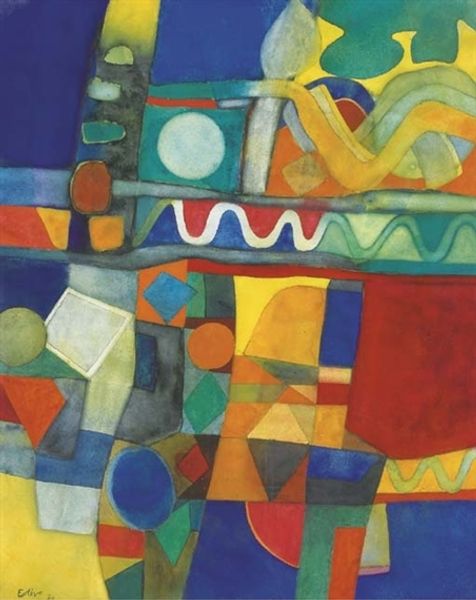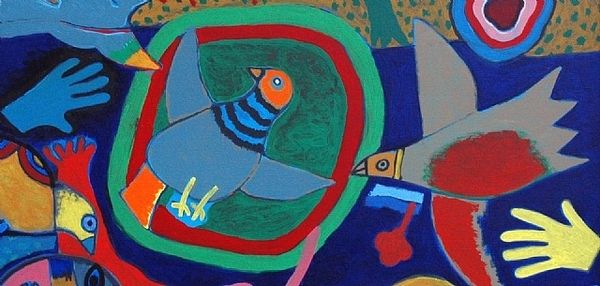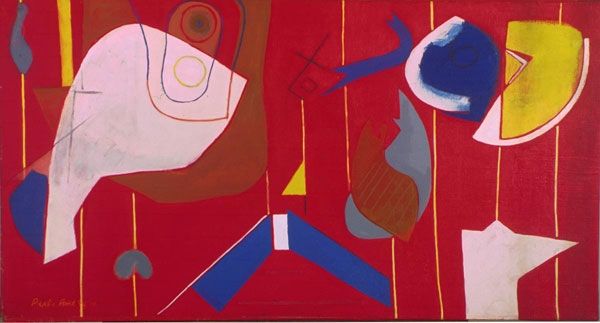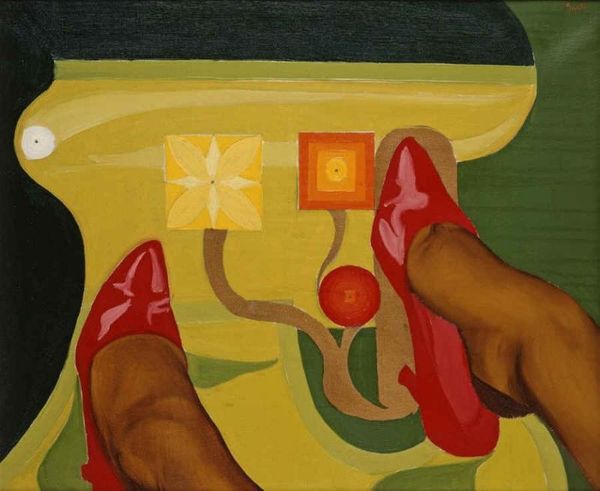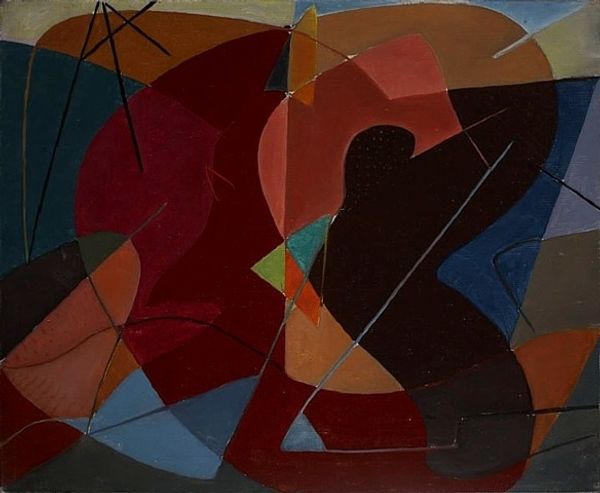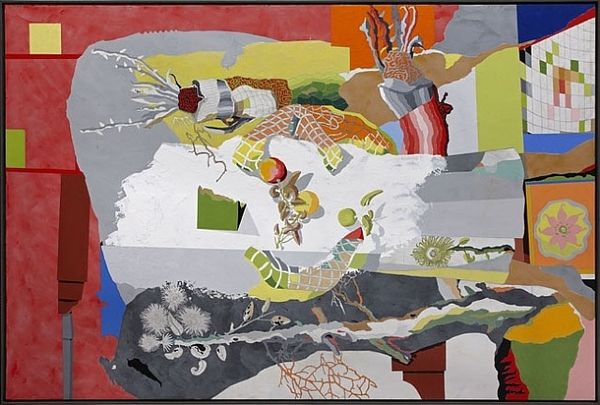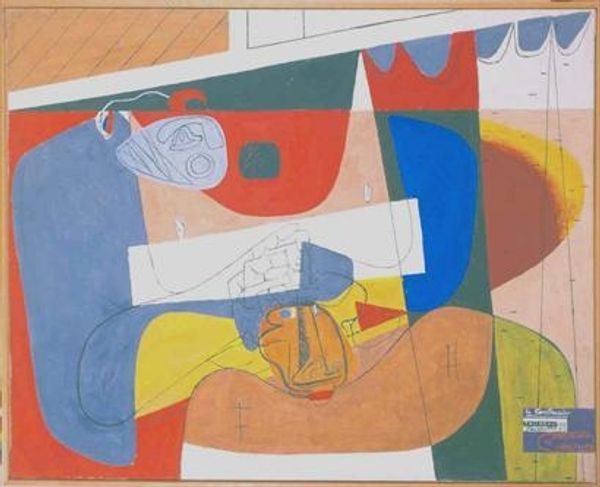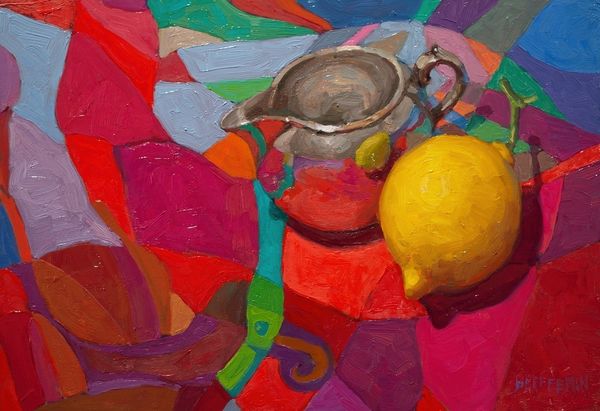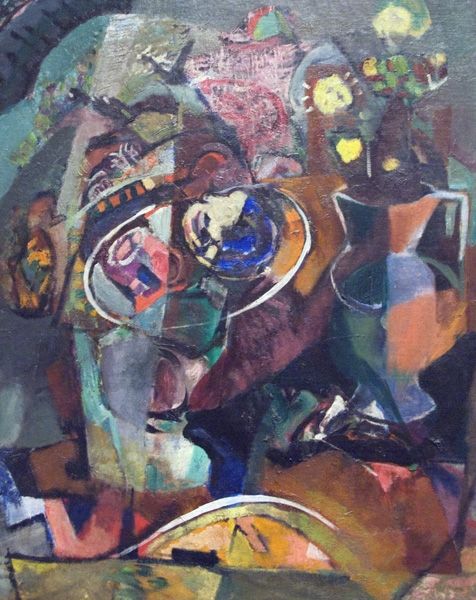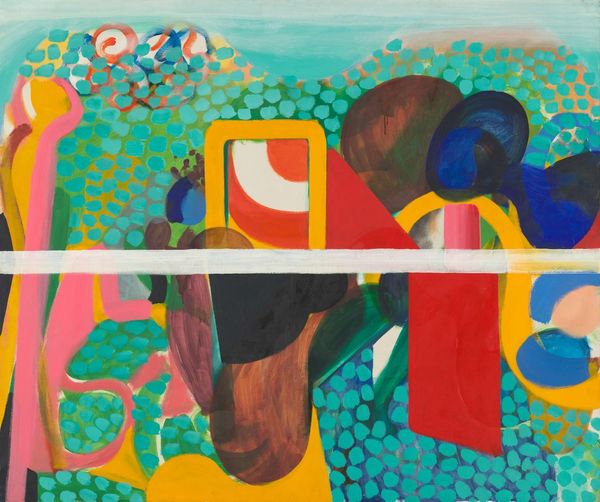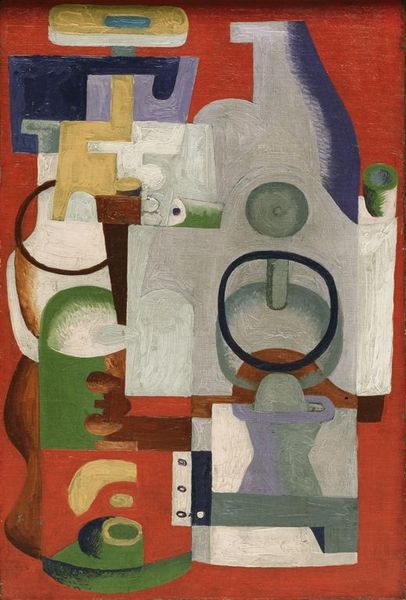
painting, oil-paint
#
cubism
#
abstract painting
#
painting
#
oil-paint
#
painted
#
mural art
#
handmade artwork painting
#
geometric
#
modernism
Dimensions: overall: 90.5 x 110.5 cm (35 5/8 x 43 1/2 in.) framed: 94.3 x 114.8 x 1.9 cm (37 1/8 x 45 3/16 x 3/4 in.)
Copyright: National Gallery of Art: CC0 1.0
Editor: This is Diego Rivera’s "No. 9, Nature Morte Espagnole," painted in 1915 using oil paint. It's a vibrant, fragmented still life. I am intrigued by the interplay of recognizable objects with such strong geometric abstraction. What are your initial thoughts? Curator: Immediately, I'm drawn to the materiality of Rivera's Cubism. Notice how he builds form not just through geometric shapes but through a visible layering of oil paint, practically advertising its own artifice. It begs us to consider not just *what* is depicted, but *how* it is constructed. What do these objects tell us about the labor behind the luxury of still life itself? Editor: That's interesting – the "labor behind the luxury." It almost feels like he is taking apart the traditional still life. I see objects like pitchers and maybe some flowers, but it feels less about celebrating their beauty and more about... their construction? Curator: Precisely. Rivera isn’t just representing objects; he’s revealing the underlying industrial and material processes which were implied but obscured. Consider how the geometric breakdown mimics the fragmentation of labor in factories – taking apart craft into easily repeatable units. Rivera is working during World War One - so it speaks to this broader theme of how art is transformed, deconstructed even by political change. Editor: I never thought about it that way, in the context of World War I. It feels like the deconstruction reflects the social upheavals of the time. Curator: Absolutely. And the choice of materials is key. Oil paint, traditionally associated with "high art," is used to depict everyday objects, blurring those boundaries. This brings art down to Earth, reminding us of the social conditions under which art and all material things are made. Editor: So it is like he’s challenging the preciousness of art by focusing on the process and materials involved? Curator: Exactly. The piece invites us to think critically about how the means of production shape our understanding and experience of the world around us. Editor: This really gave me a new perspective. Seeing it as a commentary on the labor and materials behind art itself makes me appreciate it on a completely different level!
Comments
No comments
Be the first to comment and join the conversation on the ultimate creative platform.

